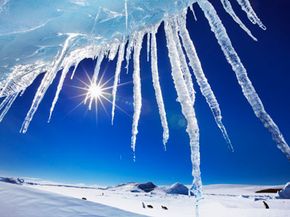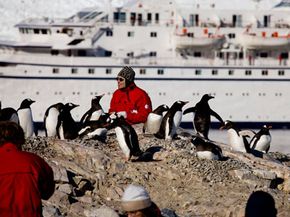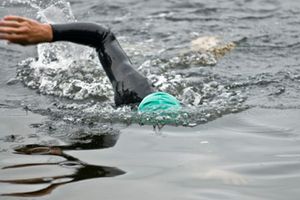Ice. Snow. Water. Penguins. The allure of Antarctica. This cold, southernmost continent is an increasingly popular tourist destination. Its vast landscape of ice and snow, as well as its wildlife population, attract nature-loving vacationers and some tourists who enjoy activities like kayaking or cross-country skiing. Others simply float through the area onboard a cruise. Whatever the reason people come to Antarctica, they're coming. And it's causing some controversy.
But before we get into that, let's look at some facts about Antarctica.
Advertisement
Antarctica is a land mass located around the South Pole and it has more ice than any other place on Earth. In fact, 99.5 percent of its land mass is covered in ice. During Arctic winter, the ice sheet covering the continent gets even bigger. Antarctica is our fifth largest continent, at 5.4 million square miles (14.2 million square kilometers), coming in between South America and Europe. Its shape is roughly circular, with one arm reaching out toward South America. This is why many trips to Antarctica are via Argentina.
Even during its warmest period (November to February), Antarctica's temperatures mostly stay below freezing. During the winter, they can drop as low as minus 90 degrees Fahrenheit (minus 68 degrees Celsius). The continent receives little precipitation and its snow is dry and powdery. Its constant strong and blustery winds can reach speeds of 200 miles per hour (321 kilometers per hour).
Naturally inhospitable to humans and most animals, Antarctica wasn't even formally explored until the 19th century. Today, though, many scientists and researchers call Antarctica their temporary home, living in special facilities while they study the ecosystem and native life.
What kind of life is there on Antarctica? The harsh climate and landscape isn't kind to most land animal life. The sea, though, is a different story. The southern oceans are full of nutrients and protein. The abundant food sources sustain many species, including whales, sea birds, seals and more. The most famous ambassador of Antarctica is the penguin, a bird that lives in colonies on the Antarctica shores and feeds from the sea.
Since Antarctica has no human inhabitants, many nations have laid claim to it, including Argentina, Australia, Chile, France, Great Britain, New Zealand and Norway. However, the terms of the Antarctic Treaty of 1959 state that the continent is reserved purely for scientific research. This also keeps Antarctica a war-free and nuclear-free zone. Currently, 47 countries have signatures on the treaty.
For those visitors who aren't conducting scientific research on the continent, what's to see and do in this icy land?
Advertisement













